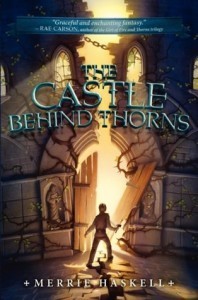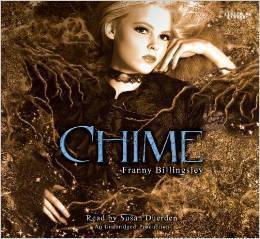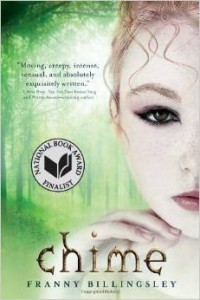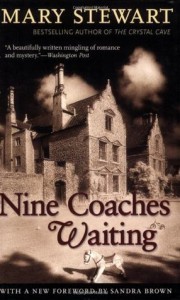Rachel Neumeier's Blog, page 370
June 9, 2014
Sideways Awards
I don’t really follow alternate history, but for those of you who do, here are the nominees for this year’s Sideways Awards:
Short Form
“The Weight of the Sunrise,” by Vylar Kaftan
“A Brief History of the Trans-Pacific Tunnel,” by Ken Liu
“Tollund,” by Adam Roberts
“Uncertainty,” by Kristine Kathryn Smith
“Cayos in the Stream,” by Harry Turtledove
“Blair’s War,” by Ian Watson
Long Form
1920: America’s Great War, by Robert Conroy
The Secret of Abdu el Yezdi, by Mark Hodder
The Windsor Faction, by D. J. Taylor
Surrounded by Enemies: What If Kennedy Survived Dallas?, by Bryce Zabel
I believe the judges are pretty strict about what constitutes real alternate history. Not sure how they feel about stories that lack plot and therefore aren’t necessarily really stories. I know in the past Ken Liu was nominated for the Hugo for a novella in the style of a documentary, that came across to me as too documentary-ish and not enough of a real story, and the name of his entry above makes me wonder if this is another like that. He’s a good writer, though, I think.

June 7, 2014
Recent Reading: CASTLE BEHIND THORNS by Merrie Haskell
What Amazon shipment got lost on the way? Naturally, this one, when I’ve been waiting and waiting to read it! Of course they shipped another copy overnight — nobody does customer service like Amazon.
Anyway: CASTLE BEHIND THORNS
In the room beyond, everything was broken.
Every single thing.
The mantel lay in two disjointed pieces on the cracked hearth. Mixed with the mantel’s splinters lay the shattered crest of a great family, their gilded phoenix ad silvered swan once entwined, now separated and dismembered.
The enormous wooden tables throughout the room sagged and slumped like beasts fallen to the hunt. Every bench around the tables lay sideways and in pieces. Each cup and bowl was shattered or smashed. All the tablecloths and tapestries puddled in scraps on the floor or hung in tatters, and even the wood and kindling for the fireplace had been reduced to slivers.
Across the red-painted walls adorned with gold phoenixes, long scrapes revealed white plaster. Overhead, a myriad of fissures snaked along the ceiling’s timber beams.
Sand stepped over the broken mantel and crest, shedding ashes on the phoenix’s and swan’s painted feathers as he went.
How had he gotten there? How had he gotten here?
For now he knew where he had awakened.
He was inside the Sundered Castle.
Merrie Haskell’s tackled what to me has always been a fundamentally boring fairy tale – Sleeping Beauty – imbued it with heart, and brought it to life.
Sand – Alexandre – is a wonderful protagonist. For the first fifty-five pages, Sand is pretty much on his own inside the Sundered Castle. We see the Castle through his eyes; we see the land beyond, Bertaèyn, through his memory. Think medieval France, but a medieval France where evil acts can bring on tremendous curses and where you’d better be careful about praying to saints, because they may be listening. (I loved the saints, spooky as they were.)
Merrie Haskell does lots more research than I ever do, I must admit. The setting has such depth, and I loved loved loved all the practical details about blacksmithing and mending that we get throughout the story, but especially at the beginning, when Sand is alone in the Sundered Castle.
And when the “sleeping beauty” wakes up, well. Perotte is prickly and sometimes difficult and occasionally condescending – she is a princess, after all. She is also, understandably, a bit upset at having been murdered. But I like her a lot, not least because above all, Perotte is scientifically minded. You could hardly find a quality that would appeal to me more.
Perrotte measured the thorns the next day and found that they had retreated a goodly amount. They tops of the castle’s tallest outer walls were now exposed by the shrinking thorn break. Sand found this hopeful. Perrotte reserved judgment.
“It has to be the mending,” Sand said. “So we should just start again tomorrow.”
“No,” Perrotte said, drawing out the word and speaking to him like he occasionally spoke to his little sisters. “Look. The thorns are producing tiny baby raspberries that could be weighing the brances down. So, to test it properly, we have to take a day off. If the thorns still shrink, we’ll know it’s not the mending . . .”
I tell you, I stood up and cheered. Go, Perrotte! I hope she does wind up founding a university for girls; she’ll teach them how to think.
The relationship between Sand and Perrotte is so well drawn. All the relationships in this story are well drawn: between Sand and his father and stepmother, for example. Even though we hardly see them – just a bit at the end – they are both integral to the story.
The relationship between Sand and Perrotte is a friendship, not a romance, though one can see the seeds of a future romance have possibly been sown. This is a MG, after all; not likely to be romance-heavy. But this is a story that will appeal to all ages. It certainly appealed to me. CASTLE BEHIND THORNS has it all: graceful writing, impeccable research, and most of all plenty of depth. It’s a story about mending broken things: spoons and buckets and castles, relationships and lives and hearts.
I’ve really enjoyed Merrie Haskell’s other books, but this is my favorite of hers so far. I hope you all read it and let me know what you think!

June 5, 2014
Like Soylent Green?
Stories must be made of people says Chuck Wendig over at Terrible Minds, and yes, yes, that’s true, but it struck me as funny because of this real-life new Soylent product.
Which is unbelievable, because the question: What if you never had to worry about food again?
Is a lot like the question: What if you never had to read a book again?
Or: What if you never had to pat your dog again?
I mean, what? Where are these people who “worry about food” and are longing for the simplicity of never bothering to eat anything but people chow ever again? Surely this cannot be a large market? I wonder what proportion of the people who purchase this product by the 84 meal size? (I wonder how many people buy Soylent twice.)
I don’t really need to read reviews of the new Soylent to be pretty sure that it is not going to replace real food. And that it wouldn’t, even if it had a different name.
It may cause a whole new generation to look up that Charlton Heston film, though.
Meanwhile!
What gets interesting about a story isn’t when some Big External Plot is set into motion. What’s interesting is when the agency possessed by multiple characters competes. This push-and-pull of character motivations, decisions and reactions is how stories that matter are created. Because they’re stories about people, not about events, and people are why we read stories. Because we are all made of people. Our lives are made of us and all the other people around us. We live in a people-focused world because we’re solipsistic assholes who think that unless we behold it and create it, it probably doesn’t matter. And in stories, that’s pretty much true.

Spring! A different way of looking at magnolias
This is a fairly mature Magnolia ‘Ann’, which is a M stellata x M liliiflora hybrid that flowers enthusiastically in the spring and then reblooms more sparsely through the summer, as shown here:
Magnolias are relatively easy to propagate via cuttings. I have had about 2 out of 6 cuttings take in a given year, and about one per half dozen then goes on to flourish. So my original ‘Ann’ has given rise to a nice five-year-old that is about hip-high and put on about a dozen flowers this spring, and to this new baby:
Isn’t Baby Ann just too cute? The stem was about half an inch long when the first leaf unfurled this spring. Now the stem is maybe four or five inches long, and as you see the leaves completely dwarf the stem. It will be another year before I move this baby to a permanent home, and a couple more years after that before she flowers, but isn’t she cute right this minute?
It’s amazing how you think you’re really only interested in big displays of flowers, but then find yourself captivated by a new infant that won’t flower for years.
All my hobbies are long-term hobbies. Except cooking. I seldom wait till brownies are all the way cool before I slice ‘em.

June 4, 2014
Recent Reading: CHIME by Franny Billingsley
So, CHIME. What do you think of this cover? I think it’s beautiful and evocative:
I hate the green cover on Amazon:
I think one reason I got this in paper is that I loved the cover. If I’d only been able to get the one with the green cover, I’d have gotten this one in Kindle format.
The cover’s not why I’m keeping the book rather than giving it away, though. I’m keeping the book because it’s so technically impressive. It was a National Book Award finalist and I can certainly see why.
—-
“I want to go home.” My sister turned from the river and closed her eyes, as though she could wish away the river, and the barge on the river, and Eldric on the barge. But life doesn’t work that way, more’s the pity.
“We can’t leave now,” said Father. “It would hurt Eldric’s feelings, don’t you see?”
But Rose didn’t see. She never saw, not about feelings. “I want to go home.”
Villagers thronged the riverside, but they gave us plenty of room. I’d forgotten that, forgotten how they left a cushion of air around the clergyman and his porcelain daughters. We’d always be outsiders, even though Father’s spent twenty years in the Swampsea and Rose and I have spent seventeen. we’ve never been anywhere else.
“One hundred and eighty-three steps until home,” said Rose.
—–
I squeezed a peek at Eldric as he and Mr Clayborne shook hands. Father was wrong, of course. Eldric wasn’t handsome, not in a Greek statue kind of way, not like Cecil Trumpington, who wants to marry me. Well, Cecil actually wants to marry the idea of me. He wants a girl with ivory skin and corn-silk hair; he wants a girl with the face of an angel.
——
I’d have to talk to Eldric, wouldn’t I? Talk to this foreign boy-man animal. I knew nothing of boy-men and I didn’t care to learn. And he wouldn’t merely be living with us, but sleeping in Stepmother’s sickroom, sleeping in the very bed on which she had died.
And eat with him?
Mealtimes had been so awkward after Stepmother died and Father started spending time at home again. Neither of us had anything to say and Rose is no great conversationalist herself. We hadn’t had proper mealtimes while Stepmother was ill. Skipping meals is terrifically convenient: it gives one lots of time to brood and hate oneself.
Anyway, I hate cooking and I hate the kitchen and I hate Rose when she begins gulping air; which she was doing now as a way of limbering up for a fit of screaming. I’d warned Father, reminded him that Rose doesn’t like strangers, but Father never listens . . .
At least Rose doesn’t hide what she feels. At least she’s not silent, like Father.
There are several kinds of silence. There’s the silence of being alone, which I like well enough. Then there’s the silence of one’s father. The silence when you have nothing to say and he has nothing to say. The silence between you after the investigation of your stepmother’s death.
We’ve never spoken of the inquest, at which the coroner testified that Stepmother had died of arsenic poisoning. Of the inquest, at which Father testified that Stepmother might have taken her own life. Of the inquest, at which I testified that Stepmother would never have taken her life.
Not ever.
The air shattered. Rose’s scream had begun. The others jumped, then looked about, wondering if they should pretend not to notice. But I was still thinking about silence.
Father’s silence is not merely the absence of sound. It’s a creature with a life of its own. It chokes you. It pinches you small as a grain of rice. It twists in your gut like a worm.
Silence clawed at my throat. It left a taste of burnt matches.
No, our family doesn’t talk much.
——
This flowing first-person narrative is brilliant, it really is.
I did not like the book at all, and this is true even though the reader can see perfectly well right from the beginning that Briony is a good person, that she is legitimately a hero; that Eldric is an excellent male lead and the relationship between them (my favorite part of the book) is good for them both; that by the end, it will be made clear to everyone that Stepmother was evil and Briony, despite what she thinks, is not.
All this is true, but even so, I didn’t like the book. It was painful to read. Self-hatred is just not a characteristic that appeals to me at all, even when it’s clear that Briony is wrong about everything and that she will realize this by the end. Which she does, there’s no surprise twist to force everything to come out badly after all, thankfully.
I believe this is a book I might like much, much better on a re-read. I suspect that I would have liked it better the first time through if I’d flipped ahead and read the last couple of chapters before I waded through the swamp of the middle. (I don’t usually read ahead, so this didn’t occur to me til later.)
As a book to study first-person voice, well, CHIME is indeed brilliant. I wouldn’t keep it just for that reason unless I suspected I’d like it on a re-read, but it IS brilliant. I’m definitely interested in what Franny Billingsgate is going to do next. Preferably something not set in or near a swamp, and with a good deal less of a slog through self-hatred. In the meantime, I’m curious about her backlist.

June 3, 2014
Raspberry truffle brownies
I was kind of going to do a low-carb thing over May, and then I thought maybe June, and now it is pretty clear that isn’t going to happen. Because I keep deciding I just have to have sugar, preferably with cream cheese somewhere in the recipe as well. And chocolate, of course. Besides, there was a potluck, so I had to make something! I made these, which are a big favorite for my mother as well as for me. I’ve seen this recipe in Taste of Home, but it’s a pretty common recipe so I don’t know where it came from originally. But good job, whoever made these brownies first!
Raspberry Truffle Brownies
1/2 C butter
1 1/4 C chocolate chips
2 eggs
3/4 C packed brown sugar
1 tsp instant coffee granules
2 Tbsp water
1/2 tsp baking powder
3/4 C all-purpose flour
1 C chocolate chips
8 oz cream cheese
1/2 C powdered sugar
1/3 C seedless raspberry jam
Bar white chocolate, for garnish
Okay, melt the butter and chocolate in the microwave, stirring occasionally. Stir until smooth and set aside to cool slightly. Beat the eggs and brown sugar; dissolve the coffee granules in the water and add to the egg mixture. Beat in the melted chocolate. Whisk the baking powder into the flour and add to the egg mixture.
Pour batter into a greased 9″ square baking dish (line the pan with foil and grease foil for easiest cutting) and bake at 350 degrees for 25-35 minutes, until a toothpick an inch from the center comes out clean. I overbake this recipe from time to time and if you do that, the brownies will be dry. So I’d suggest testing early and often. This is why I give such a large range of baking times.
Melt the chocolate chips with the cream cheese in the microwave. Stir until smooth. Beat in the powdered sugar and raspberry jam. Spread over mostly cool brownies and chill in the fridge for a couple of hours before slicing.
To me, these brownies are tasty but plain-looking. You can spruce up the appearance easily by taking a white chocolate bar and a vegetable peeler. Just hold the chocolate bar over the brownies and peel off shavings and curls. You’ll get bigger, smoother curls on a hot day and little shavings on a cold day, but either way the white chocolate will greatly enhance the look of lots of chocolate desserts, including these brownies.

June 2, 2014
Recent Listening: MORT and SOUL MUSIC
A disappointing weekend, really: Kenya got Reserve and Honey got Reserve and the professional handlers got Winners. Winners is all that matters. So, yeah, lots of driving and so on and not much to show for it. Well, some weekends are like that.
All that driving means I did finish listening to SOUL MUSIC by Terry Pratchett, the second of the Death series. I listened to MORT early this year and . . . was not all that impressed, unfortunately. It was one of the earlier Discworld books and I don’t think Pratchett had really hit his stride yet.
But . . . personally, I found SOUL MUSIC only mildly entertaining, too, which was too bad. I was expecting to like it much better because it is the 16th Discworld book. At this point, I am afraid I may just prefer the stories where Death appears as a minor character (as in the Vimes series) to the books in the actual Death series.
Although, come to think of it, I did read REAPER MAN years ago and I really enjoyed that one.
Anyway, SOUL MUSIC. For someone really into classic Rock and the history of classic Rock, this would probably be a great book. Even I caught a lot of the puns, like the deaf leopard and so forth, but I’m sure I missed a lot. Didn’t some famous rocker wear a glove on one hand? (Was that Michael Jackson?) I really have never been up on celebrity trivia, as you may gather. I think being up on classic rock celebrity trivia would definitely enhance your enjoyment of SOUL MUSIC.
I didn’t really like Susan. I wasn’t keen on Imp. I did not get why Susan should care about Imp particularly. I am out of patience with Death going off and being angsty. The forgetfulness thing with the Foreign Legion of Klatch might have been funny to read about, but I found it frustrating to listen to. The general stupidity of the senior wizards is just annoying.
I liked Cliff and Blod, though.
Fine. Adequately entertaining. I have at least one more of the Death series in Audio form already (HOGFATHER), so I sure hope it falls for me more in the REAPER MAN category rather than the MORT / SOUL MUSIC category.

A little hiatus; or, switching horses in midstream
So, just sent the first six chapters — 145 pp — of KERI to my RH editor, Michelle Frey. We arranged to have her look at a partial manuscript just to make sure she thinks this current project, which she last saw in a three-pages-and-proposal form, is looking good to her. She says she will get back to me with her reaction by mid-June (which I do not regard as a hard deadline, but it would be nice to hear by then).
And you know what? I’m finding it pretty inhibiting to not know whether she’ll give me a thumb’s-up or thumb’s-down for KERI.*
So, since I don’t want to work on that right this minute, and since I made a reasonable amount of progress in May and feel fairly unconcerned about the deadline**, I have moved over to the OTHER story which I have in mind for Random House, which btw I think I have a title for (amazingly enough). I am inclined to call this one THE WHITE ROAD OF THE MOON. What do you all think about that? Yes, no, maybe? I should post a few pages of it in a day or so, but I’m at the wrong computer right this moment.
Anyway, my goal is actually to have about 150 pp of that one ready by the time Michelle gets back to me about KERI. That way the conversation can go in only one of two ways:
a) Michelle: “KERI is lovely, but I’m afraid that because of [insert reason here] it doesn’t really seem like quite what I have in mind for this imprint.”***
Me: “Well, that’s too bad, but here, take a look at this other manuscript, which I am pretty sure I could also finish by September.”
b) Michelle: “I love KERI! It is perfect in every way!”
Me: “That’s great! I’m so glad to hear it! Also, here, take a look at this other manuscript and see what you think about it for next year.”
Both of these options are acceptable, though of course I would strongly prefer Option (b).
WHITE ROAD is moving along beautifully, and I already had part of it sitting there, so I think I can pull this off.
* Michelle has turned down three of my books that are now on the shelf from other publishers: the first Griffin Mage book and HOUSE OF SHADOWS, both of which she felt were adult rather than YA (and you’ll notice both were published as adult); and BLACK DOG because she preferred to see high fantasy from me rather than paranormal. This was all fine, after all it all worked out anyway, but you can see why I don’t take for granted that she’ll love KERI.
** Fairly unconcerned does not mean totally unconcerned. If I don’t hear back from Michelle by, say, the third week of June, I will have to start moving forward with KERI regardless of how I feel about it.
*** I believe Editing 101 has a section on “How to sound sincerely flattering as you critique or reject one of your author’s manuscripts.” All editors I’ve ever interacted with seem really skilled at this.

May 29, 2014
Recent Reading: NINE COACHES WAITING
O, think upon the pleasure of the palace!
Securèd ease and state! The stirring meats
Ready to move out of the dishes, that e’en now
Quicken where they are eaten . . .
Banquets abroad by torchlight! music! sports!
Nine coaches waiting – hurry, hurry, hurry –
Ay, to the devil. . . .
Tourneur, The Revenger’s Tale
So you probably heard that Mary Stewart has died? It was all over Twitter a week or so ago. She was ninety-seven, I believe. Imagine that. It really is amazing, thinking what the world was like in 1917 compared to today. Wow.
NINE COACHES WAITING was published in 1958. Wow again. Especially when you consider it wasn’t her first book, and her last was ROSE COTTAGE published in 1997. Quite a career.
I first read NINE COACHES WAITING when I was . . . I don’t know, in my late teens, probably, somewhere around there. It was this exact Crest paperback, 50c it says on the cover. Horrible cover. I have no idea who this glamorous blonde is supposed to be, the picture is ridiculously unsuited to the story. That’s fine; I need to buy a new copy anyway because this one is falling apart; it’s held together – barely – by tape. It’s my mother’s book and she never buys a new copy if the old one is still at all readable, so plainly I should get her a new one. The modern editions have much better covers anyway:
Anyway, I used to like Mary Stewart, but I wonder if I ever knew why? It’s been a long time since I read her romantic thrillers – her Arthurian retelling, yes, I’ve read that more recently, but the others, not for decades, I think. It’s very different reading this book now. I think I know what I’m appreciating about the writing and the story now, whereas when I was in my teens , I expect I knew what I appreciated, but not necessarily why.
Listen to this opening:
I was thankful that nobody was there to meet me at the airport.
We reached Paris just as the light was fading. It had been a soft, gray March day, with the smell of spring in the air. The wet tarmac glistened underfoot; over the airfield the sky looked very high, rinsed by the afternoon’s rain to a pale clear blue. Little trails of soft cloud drifted in the wet wind, and a late sunbeam touched them with a fleeting underglow. Away beyond the airport buildings the telegraph wires swooped gleaming above the road where passing vehicles showed lights already.
Some of the baggage was out on the tarmac. I could see my own shabby case wedge between a brand-new Revrobe and something huge and extravagant in cream-colored hide. Mine had been a good case once, good solid leather stamped deeply with Daddy’s initials, now half hidden under the new label smeared by London’s rain. Miss L. Martin, Paris. Symbolic, I thought, with an amusement that twisted a bit awry somewhere inside me. …
Nice first sentence, and check out how Mary Stewart immediately backs off and leaves the reader asking, “What? Why?” while she sets the scene and introduces the protagonist. The whole introduction is a very nice show-don’t-tell introduction, and right away, on page two, we are met with hints that Things May Not Be Quite Right, as Miss Linda Martin reminds herself that she is supposed to be a proper English governess, that she is not supposed to be able to speak or understand French.
Then the tension ratchets steadily upward for several hundred pages. Right away, we meet the primary villain of the piece, Léon de Valmy. I love this bit:
He was smiling now as he greeted his wife and turned to me, and the smile lit his face attractively. There was no earthly reason why I should feel suddenly nervous, or why I should imagine that Héloise de Valmy’s voice as she introduced us was too taut and high, like an overtight string.
I thought, watching her, she’s afraid of him . . . then I told myself sharply not to be a fool. This was the result of Daddy’s intriguing build-up and my own damned romantic imagination. Just because the man looked like Milton’s ruined archangel and chose to appear in the hall like the Demon King through a trap door, it didn’t necessarily mean that I had to smell sulphur.
Ah, Léon de Valmy! And a very sensible desire not to get carried away by one’s romantic imagination. This is such a perfect Gothic story, it really is, and Mary Stewart had to work hard to counter Gothic sensibility with plain common sense. This is one of those stories where the author might have forced the heroine to be horribly, desperately stupid in order to make the plot work. Stewart managed to make Linda Martin sensible and intelligent. When she has a hard time believing in the murderous plot, it’s because it really is pretty hard to believe that anything like that would honestly be going on. Also, when Linda is suckered by circumstance into believing that Raoul de Valmy is involved in the plot, it’s not because she’s stupid, but because the evidence against him is overwhelming – and even then she mostly doubts him because it’s her duty to doubt him.
Let me just add that I really appreciate the elevation of duty above love in this story. I wonder how many writers in this me-first modern world would handle that dilemma that way?
I had forgotten how long it takes to play out the endgame. The story sweeps the reader along, and by the time we get to the tipping point of the story, the reader is unlikely to pause till he or she reaches the end. I’m surprised to see the “endgame” part of the book actually takes about 100 pages. I think the slow built up makes the hide-and-seek thing seem to move at double time, once we finally get to it.
Also, this time through, I think I was most touched not by Linda’s dilemma regarding Raoul, which is after all required by the plot of any Gothic novel; and not by Linda’s determination to protect Philippe, since any decent person will defend a nine-year-old boy; but by her defense, right at the end, of Héloise de Valmy, who needs but does not deserve kindness . For me, Linda’s interaction with and sympathy for Héloise are what makes her seem like a real heroine and not like a copy of every other Gothic heroine ever.
Overall, very nice writing, good tight plotting with an excellent use of tension, nice characterization. I believe I’ll go on a Mary Stewart kick for a while; these are just about perfect to revisit now, when I am busy enough that I don’t really want to read anything new-to-me. I’m glad to be reminded of them , though sorry it took Mary Stewart’s death to remind me.

May 28, 2014
A craving for cheesecake
I haven’t been baking a lot lately, but I suddenly developed this terrible NEED for cheesecake, you know how it is. So I made this:
White Chocolate – Coconut Cheesecake
1 crumb crust (I just combine 1 1/2 C or so of very fine vanilla wafer crumbs and enough butter to make it stick together, say about 5 Tbsp)
5 pkg cream cheese (the 8-oz size, of course)
1 C sugar
1 1/2 C white chocolate chips or white chocolate bars, broken up, melted, and cooled slightly. I used Ghirardelli bars, I think.
4 eggs
3/4 C coconut milk (shake the can hard before you open it.
2 tsp coconut extract
1 tsp vanilla extract
3/4 C flaked coconut, toasted.
Make the crust, press into a 10-inch Springform pan, and bake at 350 for ten minutes. While the oven is hot, toast the coconut. It will only take about two or three minutes to toast the coconut. Plan to stir once in the middle.
Soften the cream cheese in the microwave. Add the sugar and beat until smooth. Beat in the white chocolate. Beat in the eggs, one at a time. Beat in the coconut milk and extracts. Stir in half the toasted coconut. Pour into prepared crust. Bake at 350 for 45 minutes, turn the heat down to 300 degrees, rotate the cheesecake (assuming your oven does not heat quite evenly), and bake another 15-20 minutes, until it looks set but still jiggles slightly in the center when you gently shake the pan.
Cool in the pan for 5 minutes. Run a knife along the edge to loosen the cheesecake from the rim, but do not remove the rim. Cool, then place in the fridge over night (or for at least six hours; if you make the cheesecake early in the morning, it will certainly be ready by dinnertime.
Sprinkle with the rest of the coconut before serving.
Now, if I were making this again, I would be SO TEMPTED to remove a cup or more of the batter, stir in melted dark chocolate, and swirl it in to the white chocolate base. But I didn’t this time around. Next time, though. And if I did that, btw, I’d also make a chocolate crumb crust, which is just the same only you add 1/4 C of cocoa powder and 1/4 C of powdered sugar to the crumbs when making the crust.
Anyway, this was a good cheesecake, just as easy as any other cheesecake, so if you don’t have a springform pan, you should totally pick one up and start making your own cheesecakes. Wonderful for potlucks, too.










